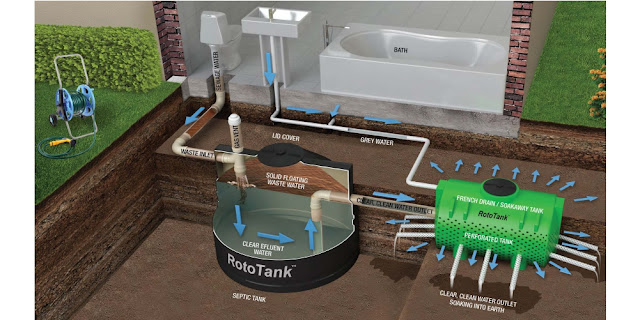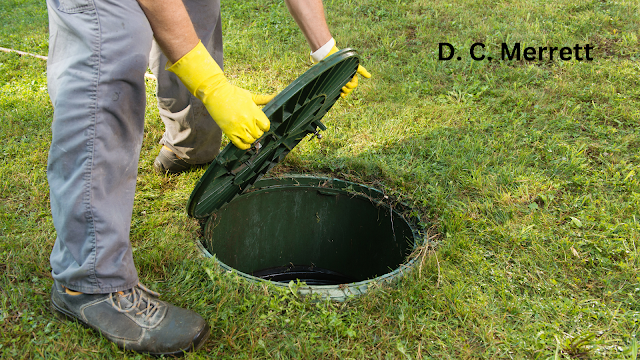How do I know if my septic tank is blocked?
How Do I Know If My Septic Tank Is Blocked? Warning Signs and Solutions
A septic tank is an essential part of many residential properties, responsible for treating and disposing of household wastewater. To ensure your septic system functions properly and avoid costly repairs, it's crucial to recognize the signs of a blocked septic tank. In this blog post, we will discuss common warning signs, potential causes, and solutions for a blocked septic tank.
The Importance of a Healthy Septic Tank
A septic tank plays a vital role in wastewater treatment for homes that aren't connected to municipal sewage systems. When functioning correctly, it separates and breaks down solid waste from household water, allowing treated effluent to be safely released into the environment. However, when a septic tank becomes blocked or overloaded, it can lead to numerous problems, including foul odors, slow drainage, and even sewage backups in your home.
Warning Signs of a Blocked Septic Tank
Recognizing the signs of a blocked septic tank is the first step in addressing the issue. Here are some common indicators:
Slow Draining Fixtures: If you notice that sinks, bathtubs, and toilets are draining more slowly than usual, it may be a sign of a blockage in your septic tank. This reduced drainage capacity can result from a buildup of solid waste or other obstructions.
Foul Odors: One of the most noticeable signs of a blocked septic tank is the presence of foul odors around your property, especially near the septic tank or drain field. These odors indicate that the system is not properly processing wastewater.
Standing Water: A blocked septic tank can lead to standing water or wet areas in your yard, particularly around the drain field. This occurs when effluent cannot properly disperse into the soil.
Sewage Backups: Perhaps the most distressing sign of a blocked septic tank is sewage backups in your home. If you notice toilets or drains overflowing with sewage, it's a clear indication of a significant issue that requires immediate attention.
Lush Grass Over Drain Field: While it might seem counterintuitive, an unusually green and lush lawn over your drain field can be a sign of a blocked septic tank. This could indicate that effluent is not properly dispersing into the soil, leading to overfertilization.
Potential Causes of a Blocked Septic Tank
Several factors can contribute to a blocked septic tank:
Sludge Buildup: Over time, solid waste materials settle at the bottom of the septic tank, forming a layer of sludge. If the tank is not pumped regularly, this sludge can accumulate and block the drain pipes.
Excessive Water Usage: Using an excessive amount of water in a short period can overload your septic system. The increased water volume can push solids and debris into the drain pipes, leading to blockages.
Non-Biodegradable Items: Flushing non-biodegradable items like wet wipes, sanitary products, and paper towels down the toilet can contribute to clogs in the septic tank. These items do not break down easily and can accumulate over time.
Tree Roots Intrusion: Tree roots are known for seeking out sources of moisture, and they can infiltrate septic drain pipes. As the roots grow and spread, they can block the pipes and cause significant damage.
Solutions for a Blocked Septic Tank
If you suspect a blocked septic tank based on the warning signs mentioned above, it's essential to address the issue promptly. Here are some solutions to consider:
Professional Inspection: Contact a septic system professional to perform an inspection and identify the location and severity of the blockage. They can use specialized equipment like cameras to assess the situation accurately.
Septic Tank Pumping: If the blockage is relatively minor and within the septic tank itself, pumping the tank can often dislodge and remove the obstruction. Regular pumping can help prevent such clogs from occurring in the first place.
Hydro Jetting: Hydro jetting is a high-pressure water jetting technique used to break up clogs and clean the interior of septic tank drain pipes. It is effective at removing grease, sludge, and debris.
Root Removal: If tree roots are the cause of the blockage, a professional can use root cutting equipment to remove the intruding roots from the drain pipes. It may also be necessary to repair or replace damaged pipes.
Bacterial Additives: In some cases, bacterial additives that promote the breakdown of organic matter in the septic system can be used to help clear clogs. Consult a professional to determine if this is a suitable solution for your situation.
Septic System Replacement: In severe cases where blockages have led to significant damage to the septic system, it may be necessary to replace the entire system. This is a last resort and a costly solution but may be required in extreme situations.
Preventive Measures to Avoid Future Blockages
Preventing future blockages in your septic tank is essential to maintain a healthy system. Here are some preventive measures to consider:
Regular Septic Tank Pumping: Schedule regular septic tank pumping by a professional every 3 to 5 years, depending on the size of your household and tank. This preventive maintenance removes solid waste and sludge, reducing the likelihood of clogs.
Avoid Non-Biodegradable Items: Educate your household members to avoid flushing non-biodegradable items down the toilet. Provide waste bins in the bathroom for disposing of items like wet wipes, sanitary products, and paper towels.
Use Water Wisely: Be mindful of water usage to prevent overloading your septic system. Fix any leaks promptly, install water-saving fixtures, and avoid doing multiple loads of laundry or running the dishwasher all at once.
Tree Maintenance: Regularly inspect the area around your septic tank and drain field for tree roots that might be encroaching on the system. If you notice roots getting too close, consider trimming or removing the tree to prevent damage.
Grease Disposal: Properly dispose of cooking grease and oil by allowing them to cool and solidify, then placing them in a container and throwing them in the trash. Do not pour them down the drain, as they can solidify and cause clogs.
Chemical Additives: Some septic system additives claim to break down solid waste and prevent clogs. However, their effectiveness is debated. It's best to consult a professional before using any chemical additives to ensure they are safe and suitable for your system.
Conclusion
A blocked septic tank is a common issue that can lead to a host of problems, including foul odors, slow drainage, and costly repairs. By recognizing the warning signs and taking the appropriate steps to address the issue, you can prevent further damage and potential backups. Whether through pumping, hydro jetting, root removal, or other methods, professionals have the expertise and equipment to diagnose the issue and provide effective solutions.
Moreover, taking preventive measures to avoid future blockages, such as regular maintenance, responsible water usage, and proper disposal of waste, is essential for the health and longevity of your septic system. With the right care and attention, you can keep your septic system running smoothly, avoid the inconvenience of clogged drain pipes, and ensure the efficient treatment of wastewater on your property.



Comments
Post a Comment